#sufferagette
Text
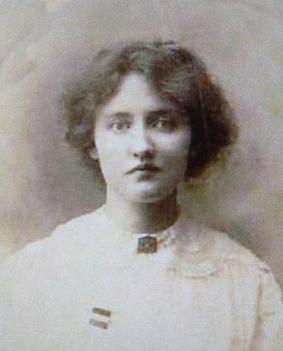

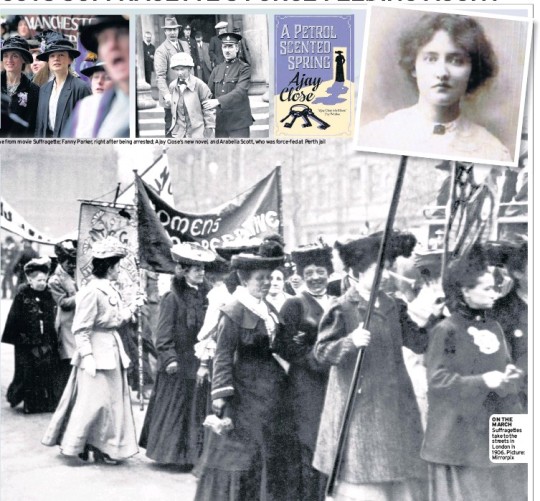
The Scottish Suffragette and campaigner Arabella Scott was born on May 7th 1886 in Dunoon.
The treatment of these women was barbaric, Arabella Scott was "the longest force-fed prisoner in Scotland, happening several times a day for over five weeks. I do not know how she endured it......
Arabella's mother was a teacher and her father served as a captain in the army for more than 25 years, she attended The University of Edinburgh and gained a Master of Arts degree and went on to become a schoolteacher.
Both Arabella and her sister Muriel were advocates for women's suffrage and were active speakers in Scotland for the cause and in 1909, were both arrested on the charge of obstruction in London after they tried to hand a petition to the British Prime Minister Asquith. They served 21 days at H M Prison Holloway.
Arabella was arrested and released several times over the following years, under the Cat and Mouse Act, and Act put into place so that suffragettes could not kill themselves in prison due to hunger strikes, instead when they became too weak they were released and then re-arrested at a later time.
In May 1913 Arabella was arrested with three other women and one man after an unsuccessful attempt to burn down Kelso Racecourse. She was sentenced to nine months imprisonment – as was the man whose crime was to drive them there. Janie Allen a suffragette journalist, bitterly compared his sentence with those who assaulted children and often got less than that.
She went on hunger strike and was released under the Cat and Mouse Act. Unlike others who went to ground once they were released Arabella stayed public. She had promised her employers, Leith School Board, that she would not take part in any more militant activity so she was kept on their list. She was arrested, went on hunger strike released and disappeared for 2 months. She was ‘found’ on a WSPU protest and returned to jail. She went on hunger strike again and was released again..
It took many months to ‘find’ her again, this time working as a WSPU organiser in Brighton. She was arrested and forcibly brought back to Edinburgh and jail. Again the same scenario ensued and she took the train to London before she was due back. She was ‘found’ accidentally while the house she was staying in was being searched for someone else. So, once again she was forcibly brought back but this time sent to Perth prison to be force fed.
Outside the prison gates, 3,000 people kept a vigil, although they were not even told what exactly was going in inside.
She was kept in isolation and force fed, a visible legacy of this remained in her chipped teeth. These were her battle scars, sustained when she tried to resist being force fed, her mouth held open and a mixture of eggs flour and milk were poured down her throat through a tube attached to a funnel, this happened twice a day every day during her incarceration
She emerged feeling more militant than ever.
All her life Arabella Scott upheld a passionate commitment to women's rights, under her married name Colville-Reeves emigrated to Australia.
She died on 27thAugust 1980, and her memorial is in the Palmdale Lawn Cemetery on the Central Coast of New South Wales.
Isn't it atrocious what men inflicted on these women...........
#scotland#scottish#women's suffrage#sufferagette#strong woman#strong women#womens rights#torture#history#barbaric
66 notes
·
View notes
Text
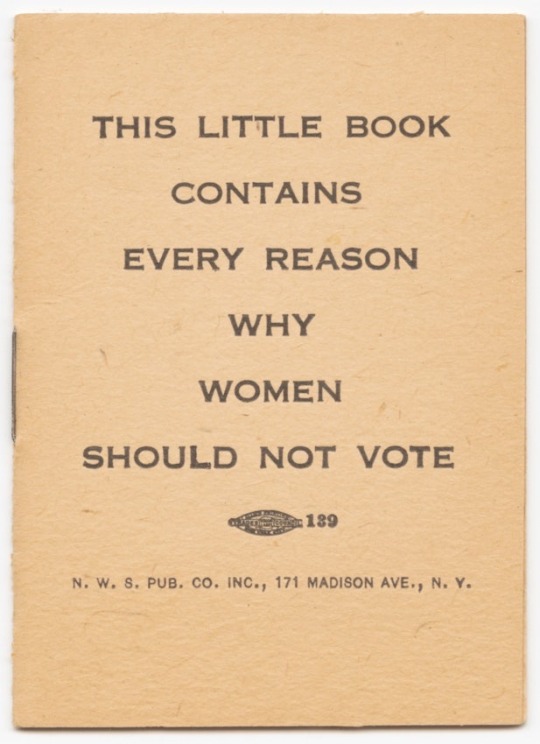
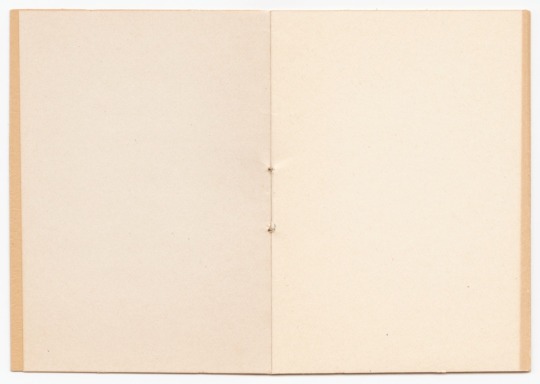
All the book's pages are blank.
7 notes
·
View notes
Photo

So, what does the Sahara Desert, Pilgrimages, women's rights and Adultery have to do with the storyline? For this #FindOutFriday look here: https://www.saraelliemackenzie.com/post/findoutfriday-answers-4 #TriviaGame #TriviaAnswers #HistoricalDrama #AreYouRight #AfricanContinent. #LargestDesert #SaharaDesert #TheCrusades #Mecca #HolyDays #Sufferagette #WomensMovement #WomensHistory #UnhappyMarriage #OnTheSide #AffairsOfTheHeart https://www.instagram.com/p/Cow8q2zraK0/?igshid=NGJjMDIxMWI=
#findoutfriday#triviagame#triviaanswers#historicaldrama#areyouright#africancontinent#largestdesert#saharadesert#thecrusades#mecca#holydays#sufferagette#womensmovement#womenshistory#unhappymarriage#ontheside#affairsoftheheart
0 notes
Text
Was listening to some old ass disney music and Sister Sufferagette came on and shit SLAPS.
youtube
2 notes
·
View notes
Note
if anything the terfs going off at you is giving me a nice block list rn 💅
that’s the only good part of them breaching their containment and putting their bullshit on non-radfem posts. free block list! ☺️
#twitter terfs also make excellent free blocklists bc every once in a while ‘’terfs’’ or ‘’jkr’’ will trend#and i block anyone who is blatantly a radfem#a lot of them on there use the suffaragette flag colors#which is very very funny to me bc they’re the exact same colors as the ones on the genderqueer pride flag#same order too. you can’t make this shit up#it’s also very bold of them to compare themselves to sufferagettes
1 note
·
View note
Video
youtube
The headline I read earlier this week said the original ‘Send in the Clowns’ singer passed at the young young age of 100. I don’t have much enthusiasm for A Little Night Music, because a single geographical location can have only so many stupid adults before I find the story unbearable. The late Glynis Johns, however is known for more than one iconic musical.
When Mrs Johns signed up for Marry Poppins, she was under the impression to play the title’s character. But with the first meeting with Mr Disney, Johns realized her mistake. To soften the blow, quick thinking Disney told Johns she’s singing a brand new song for the movie. He immediately rang up the Sherman Brothers and told them he’s taking Mrs Johns to lunch, and she’s looking forward to her new song after the meal. Through their lunch break, the brothers took the melody of a cut song, and re-worked the lyrics to fit the character.
And that is how Sister Sufferagette came to be.
Submitted by @eggs-n-ham-sam
We’re just about at the end of an era here, losing her.

First time i saw this one I was amazed because I didn’t know Angela Lansbury or Glynis Johns had ever been young, neither one of them ever failed to shine at any time.
She was the last from that movie around I think. What a gift we got from on high having her as long as we did.
To soften the blow, quick thinking Disney told Johns she’s singing a brand new song for the movie. He immediately rang up the Sherman Brothers and told them he’s taking Mrs Johns to lunch, and she’s looking forward to her new song after the meal.
Walt could do that, partly because he was Walt, but mostly because he knew what the Sherman’s were capable of. Man had a skill for finding the right people for the job and then knowing to keep them around.
So many voices, I’m grateful at least that we get to keep them alive now as opposed to 150 years ago when we couldn’t record them.
13 notes
·
View notes
Text
I saw a doll at the thrift store the other day, it was a light brown bear dressed in fancy dress, it was a beautiful maroon with lace. She had a hat on as well. A lovely sufferagette, standing alone atop a dusty wooden shelf. She reminded me of the baroness. Noble, breath taking, yet alone.
5 notes
·
View notes
Text
Context is everything I think while he would have clashed with the traditionalists, Elliot would have done pretty well in the boys elf finishing school.
He can sing, he can dance, he's well read, he'd probably be good at a lot of the finishing school stuff. BUT he would also start the male elf sufferagette movement so fast.
He and Golden would be the rebels at school, they'd be the delinquents getting detention for passing out pamphlets about elf male rights!
6 notes
·
View notes
Text
i need to be doing work but the people’s history musuem in manchester’s collections page is soooo interesting. they have got sufferagette banners from 1908 like girlie please.
0 notes
Text

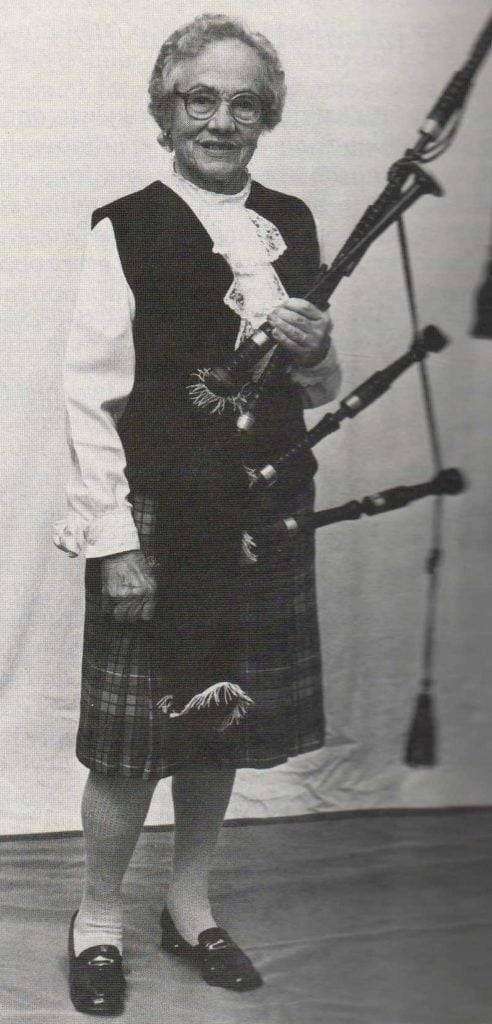
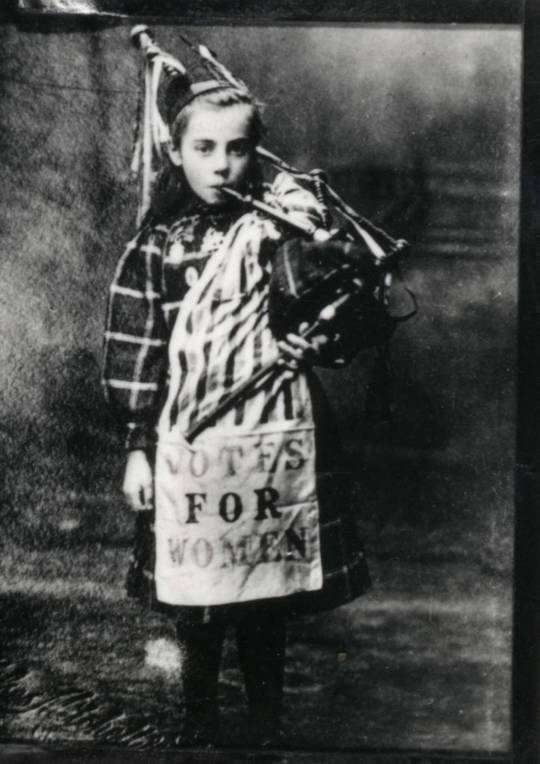
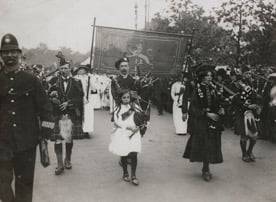

July 13th 1900 saw the birth of Elizabeth “Bessie” Watson in Edinburgh.
Born just off the Grassmarket, at 11 The Vennel to Agnes Newton and Horatio Watson, Bessie did not take long to make her mark in the world, at the tender age of 9 she combined her two greatest loves: bagpiping and woman’s suffrage, the latter makes her arguably the youngest in Scotland, if not the world.
When she turned seven, Bessie’s aunt Margaret contracted tuberculosis – an incident which would change the youngster’s life forever. Margaret lived with the family, and Bessie’s parents, worried that she might fall ill to the contagious disease, encouraged her to take up the bagpipes in a bid to strengthen her weak lungs. Her first set of pipes was specially-produced according to her diminutive stature as she was too small to properly inflate an adult-sized bag. The half-sized set of pipes was purchased from Robertson’s pipe makers at 58 Grove Street. “I hurried home from school and carried it, in a brown paper parcel down to my (music) teacher”, Bessie recalled. As one of the very few female bagpipe players in the world at that time – not to mention one of the youngest – Bessie took to her new instrument with great enthusiasm.
Bessie had more than her bag pipe playing to make her worthy of a post here, while walking with her mother through the streets of Edinburgh, Scotland, Bessie stopped to look at the window of the Women’s Social and Political Union office. Bessie became excited about the idea of women receiving the right to vote, even though she wouldn’t be able to vote for many years.
Bessie realized that her talents could help promote votes for women. She would run from school each day to play her bagpipes outside of the Calton Jail in Edinburgh for fellow suffragettes in prison.
At the first suffrage pageant she performed at, she wore a sash with the words “Votes for Women” as she performed with her bagpipes. At the height of the suffragette movement, Bessie was playing at major demonstrations and parades for the Women’s Social and Political Union, including the famous procession through Edinburgh on 9th October 1909. On that day a large crowd watched as hundreds of banner-laden ladies, wearing the suffragist colours of purple, white and green, marched down Princes Street before congregating at Waverley Market for a rally led by Emmeline Pankhurst. Watson rode on a float beside a woman dressed as Isabella Duff, Countess of Buchan in her cage! Isabella is famed for crowning Robert the Bruce at Scone when he seized the Scottish crown, she was later captured with the Bruce family and held prisoner in a cage in the open air at Berwick for four years.
Back to oor Bessie, who just a ten year-old she travelled to London to play her bagpipes in a women’s march on June 17th, 1911. J ust a few weeks later, for George’s state visit to Edinburgh, Bessie, leading the 2nd Edinburgh Company of the Girl Guides, received recognition from the king himself as she raised her salute. Having secured regal acknowledgement in time for her 11th birthday, Scotland’s youngest female piper continued in her quest to support women’s rights, accompanying inmates bound for Holloway Prison to Waverley Station and playing the pipes as their trains departed.
For the part she played in Edinburgh’s historic women’s rights pageant of 1909, young Bessie received a special gift from one very prominent individual. Christabel Pankhurst (daughter of Emmeline) came to Edinburgh to address a meeting at the King’s Theatre and Bessie was invited to attend. During the evening she was presented with a brooch representing Queen Boadicea (Boudica) in her chariot, as a token of gratitude for her help in the pageant.
During WWI, Bessie was just a teenager and used her talents to make a difference in other ways. She began helping the Scots Guard to recruit army volunteers by playing her bagpipes
In 1926 Bessie moved with her parents to a new house on Clark Road, Trinity where she would remain for the rest of her days. Following her marriage to electrical contractor John Somerville at the end of the Second World War, Bessie devoted her life to teaching music and foreign languages. Former neighbours recall that, even into her late eighties, Bessie continued to play her bagpipes at 11am every morning. It was something she had always done.
Bessie died in 1992, two and a half weeks short of her 92nd birthday. Over the course of her long life she had experienced almost a century of social progression and upheaval, and had played her part in changing the world for the better.
53 notes
·
View notes
Text

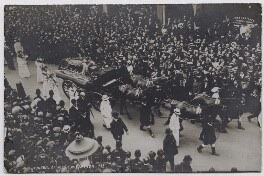
Emily Wilding Davison (1872 – 1913) was an English suffragette in the early 20th century. A member of the Women's Social and Political Union (WSPU) and a militant fighter for her cause, she was arrested on nine occasions, went on hunger strike seven times and was force-fed on forty-nine occasions.
She soon became known in the organisation for her daring militant action; her tactics included breaking windows, throwing stones, setting fire to postboxes, planting bombs and, on three occasions, hiding overnight in the Palace of Westminster—including on the night of the 1911 census.
She died after being hit by King George V's horse Anmer at the 1913 Epsom Derby when she walked onto the track during the race. The WSPU were quick to describe her as a martyr.
5,000 women formed the procession at her funeral, and the route was lined by 50,000 people. Her gravestone bears the WSPU slogan "Deeds not words". She is buried in St Mary the Virgin Churchyard, Northumberland, England.
5 notes
·
View notes
Text
THE ROARING 20'S
The 1920's were a decade of luxury and indulgence for many; however, there was a lot more to it than just wall street and flapper dresses.
FASHION OF THE 20'S
Fashion in the 20's consisted of a lot of things. The main fashion statement of the 20's was the liberation of the corset, a very different thing from the past hundreds of years. As women were now starting to gain more rights thanks to the suffrage movement, many women did not want to be limited by the rigid corsetry of the Victorian era.
Following the movement of more fredom of clothes in the 1920s, the sillouhette generally moved away from the hourglass steriotypical. Up until this point in history, many people now prefer a dropped wait line due to its versatility to different body shapes as it made everyone look great, as well as a shorter hem. This also allowed much more freedom for movement as women found they could now dance more freely as well as play many more sports. however just because these dresses were simple it does not mean they wasn't beautiful many techniques were used to create different effects which look absolutely gorgeous
Headware and hair also changed dramatically in the 1920s. Many people opted to wear hats such as chloche hats and bobbed hairstyles. This, I believe, came mostly from the insporation of La Garconne, the bachelorette, who went against almost all society standards of the previous era, getting pregnant out of wedlock, cutting her hair short, and wearing stereotypically manly clothes.
on this website it lists many other fashion trends of the 1920s in more depth.
youtube
Also in this video is shown some of the main fashion trends with more visually shown element's.
SUFFERAGETTES
The suffering movement started in 1840 and ended in 1920, but it really picked up the pace in the early 1900s. The suffrage movement was a movement by women for women focusing on gaining more rights, in particular the right to vote.
A lot of traction for the women's rights movement came from WWI. This was because many women didn't have roles in the workplace, such as factories, etc., so when all the men were away at work, the women were needed to help run things back home while the men were at home. So when the war came to an end, many women decided that they didn't want to go back to their old lives where they depended on their husbands and, in fact, wanted to build a life for themselves and gain independence.
One of the most famous suffrage protests was at the 1913 Epsom Derby. On this day, while the horses were racing, Emily Davison threw herself in front of King George's horse, Ammer. It is unclear whether Emily intended for the horse to hit her or for the horse to stop in another part of gaining attention for the rights, but either way, this was a tragic day and made many more people fight for women's rights, and women took a lot more seriously due to the public seeing the places they are willing to go to to get their rights.
youtube
In this video it shows the tragedy of which happened to suffragette Emily Davidson
youtube
this is another video which describes the acts of the suffragettes.
HARVARD REFERENCE
BBC News. (2018). Suffragettes: 100 years since women won the right to vote - BBC News. [Online]. YouTube. Last Updated: 6th February. Available at: https://www.youtube.com/watch?v=Zbdskuuocpg [Accessed 11 March 2024].
The Guardian. (2013). Suffragette Emily Davison knocked down by King's horse at Epsom. [Online]. YouTube. Last Updated: 4th june. Available at: https://www.youtube.com/watch?v=8qkU_imbFoE [Accessed 11 March 2024].
Glamourdaze. (2020). Roaring 1920's Fashion Trends - What Did Women Wear. [Online]. YouTube. Last Updated: 1st May. Available at: https://www.youtube.com/watch?v=3hwxFc2rLIs&t=1s [Accessed 11 March 2024].
Vintage Dancer. (2019). 1920s Fashion & Women’s Clothing Trends. [Online]. Vintage Dancer. Last Updated: 25th june. Available at: https://vintagedancer.com/1920s/1920s-womens-fashion/ [Accessed 11 March 2024].
0 notes
Text
How can I forget this morning? Thank you, @greaternewbritainchamber @libertybankct and Polmart for the wonderful gathering!
#InternationalWomensDay #WomensHistory #WomensRights #Sufferagette #WomanWriter


0 notes
Text
hameen näköiset housut giving international sufferagette 1910s swag. oikeesti comfiest piece of clothing ever KIITOS FIDA TAMPERE ‼️‼️

0 notes
Text
today in woke youtube dumbfuckery:
“The sufferagette’s white dresses were RACIST”.

1 note
·
View note